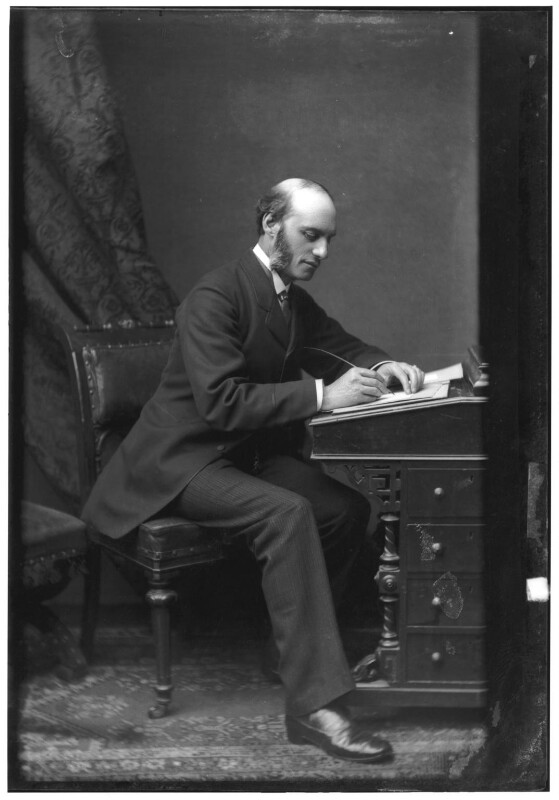
The Herschell Committee on Indian Currency, appointed in 1892, was the first of five Committees which examined India’s currency question. The other four were the Fowler, and Babington-Smith Committees, and the Chamberlain, and Hilton Young Commissions. Prior to this, the Mansfield Commission had in October 1866 submitted a brief report on implementation of the Paper Currency Act 1861. There have also been various minutes on the subject. These includes minutes of James Wilson, the first Finance Member, Sir William Mansfield (later Lord Sandhurst), George Dickson, Secretary to the Bank of Bengal, and others. We will cover there in different parts. In the first part of this series, we discuss the Herschell Committee, which submitted its report in 1893.
Background
The East India Company Directors had approved, in 1806, the introduction of uniform currency in India. But, it was only in 1835 that the Company introduced a uniform currency. This was based on a mono-metallic system, with silver as the standard of value. The price of silver relative to gold started declining since 1874 giving rise to payment problems for the Government of India. A few years earlier, the government had ignored the recommendation of the Mansfield Commission that certain denominations be in gold. On the other hand, the government announced in May 1874 that it was not interested in making gold legal tender.
The Gold and Silver Commission
In 1887, the Royal Commission appointed to Inquire into the Recent Changes in the Relative Values of the Precious Metals had reported on the relative values of gold and silver. This Commission was known as the Gold and Silver Commission. The Commission concluded that the decline in price of silver relative to gold was the result of the removal of a balancing influence. That steadying factor was the bimetallic system of Latin Union countries. Their bimetallic system had silver and gold in the ratio of 15½:1. In 1874, the Latin Union countries suspended free minting of silver. This left the price of the metal to the vagaries of the market.
The Gold and Silver Commission attributed the terminal decline in silver prices to the more than doubling of the annual average production of silver. This had increased from 1.34 million kgm during 1866-70 to 1.97 million kgm during 1871-75, and further to 2.86 million kgm during 1881-85. At the same time, the average annual output of gold declined from 0.20 million kgm to 0.17 and 0.15 million kgm during the corresponding periods. This was in the face of increasing demand for gold with more countries introducing a gold standard. The silver price relative to gold declined from 1s. 10.351d. in 1873-74 to 1s. 2. 985d. in 1892-93. This decline led to frequent fluctuations in exchange rate with countries on a gold standard.
Fiscal Impact
The decline in the value of silver had implications for the “Home Charges” that had to be paid to England every year. These charges were to paid in sterling pound and covered interest on debt, pensions, payments to the War Office, cost of Government stores, etc. In 1892-93, the Home Charges remitted to England was 16,532,215 pounds, which at the rate of 1s. 2.985d., required a payment of Rs. 26,478,415. If one were to apply the exchange rate of 1873-74, which was 1s. 10.351d., this would have been only Rs 17,751,920, showing an excess of Rs. 8,726,495. This resulted in a budget surplus of Rs. 146,600 becoming a deficit of Rs. 1,081,900 notwithstanding an increase in revenue by Rs. 1,653,300.
The Government of India’s Travails
Adding to the troubles of the Government of India, the outlook for silver was bleak. Earlier, giving in to pressure from its silver producers, the US government had tried to restore silver to its monetary status through bimetallism. Four monetary conferences were held for the purpose, the last of which was in 1892, where India was also represented. But, this had not borne fruit. The US government announced in 1892 that it would discontinue its silver purchases. These developments strengthened the prospect of silver falling further.
Ever since the price of silver started declining in 1872, the Viceroy and his Executive Council had been requesting that appropriate action be taken to maintain stability. This had not happened even by the early 1890s.
Sir David Barbour was the Finance Member from 1888 to 1893, when Lord Lansdowne was the Viceroy. He was earlier a member of the Gold and Silver Commission. Almost two decades later, Sir David Barbour recalled as follows:
“If there was to be no International Agreement and the world was gradually to drift towards the universal gold standard, India must accept the consequences, whatever they might be, or choose the heroic and hazardous remedy of changing her Standard of Value from silver to gold.”
Government Despatch of 21 June 1892
The Indian Government’s views at this stage are contained in its Despatch of 21 June 1892. It had attached a Minute by Sir David Barbour, the Finance Member. Considering the critical state of its finances, the Government of India stated in the despatch that if it was clear that the Brussels Conference would not succeed and a direct agreement with the United States was not possible, India should close its mints to free coinage of silver and arrange for introducing a gold standard.
The Minute by Sir David Barbour outlined his proposals for introducing such a gold standard for India. He suggested coins in ten and twenty rupee denominations. After opening up the mints to free coinage of gold, anyone could bring gold and have it coined into gold coins which would be unlimited legal tender. As for the ratio of exchange, he wrote: “We ought not to think of going back to the old ratio of 1 to 15½. Neither ought we to adopt the very lowest price to which silver may have fallen at any time, or to consider ourselves bound to accept the market ratio of the very moment at which the change was made. A ratio based on the average price of silver during a limited period before the introduction of the gold standard would probably be both the safest and the most equitable.”
The Government of India followed up its Despatch with further amendments and a draft bill.
Masterly Inactivity
But, the British Government’s decision was to follow a policy of “masterly inactivity”. Even the recommendation of the Mansfield Commission to introduce gold coinage for certain denominations was not considered favourably. This was along the lines what the Treasury had communicated in 1879, that “after weighing various proposals, they are led to the general conclusion that it will be practicable, without injury to the community as a whole or risk of future difficulties, to adopt a gold standard, while retaining the present silver currency of India. For that purpose they would suspend or limit the coinage of silver until they had artificially raised the value of the rupee from 1s.7d. to 2s. in gold.”
Advice to Government of India
The British Government went on to elaborate the merits of inactivity in the following words, giving the Government of India an object lesson in the process:
“The case, in short, is not so simple as the Government of India seem to suppose, and the various points noticed must be much more carefully analysed and discussed before it can be admitted that India, or even the Government of India, suffers to the extent supposed.
“Nor can my Lords admit that the responsibility for doing nothing is as great as that for doing something. The present evils are not (immediately, at all events) the results of any Governmental action, while the responsibility of the proposed scheme would rest wholly with the Government. Of one thing my Lords are sure, that it is better to sit still than to have recourse, under the influence of panic, to crude legislation, the result of which cannot be foretold, and the effect of which cannot be measured.”
The Herschell Committee
Moving forward to 1892, the Government of India became increasingly frustrated by not hearing from London. It wanted to go in for independent action and close the mints which were freely minting silver coins for circulation. It was hoped that this would pave the way in due course for a gold standard. But, the British government did not share this view. The Treasury officials considered free and unlimited coinage as the basis for a sound currency. However, Lord Kimberley, the Secretary of State for India, in consultation with the Prime Minister Gladstone, appointed in October 1892 a Currency Committee. The Lord Chancellor, Lord Herschell, was to be the Committee’s Chairman. The objective of the Committee was to provide a reply to the Indian Government.
Constitution of the Herschell Committee
Lord Herschell (1837-1899) was then Lord Chancellor for a second term. Son of a Polish Jew who had converted and become a Christian evangelist, he had had a long career in law and politics becoming a Member of Parliament and the Solicitor General before becoming the Lord Chancellor.
Members of the Herschell Committee
The other members on the Herschell Committee were Leonard Courtney, Thomas H. Farrer, Reginald E. Welby, Arthur Godley, Richard Strachey, and Bertram W. Currie. Leonard Courtney was one time professor of Political Economy at the University College, London, and a President of the Royal Statistical Society. He was also a former Under Secretary of State for the Colonies, Financial Secretary to the Treasury and Chairman of Ways and Means. Thomas Farrer was a civil servant and statistician who would also become a President of the Royal Statistical Society. He was also a member of the Gold and Silver Commission referred to above. Reginald Welby was also a President of the Royal Statistical Society and a Permanent Secretary to the Treasury. Arthur Godley, later Lord Kilbracken, was the longest serving Under-Secretary of State for India, from 1883 to 1909.
Sir Richard Strachey
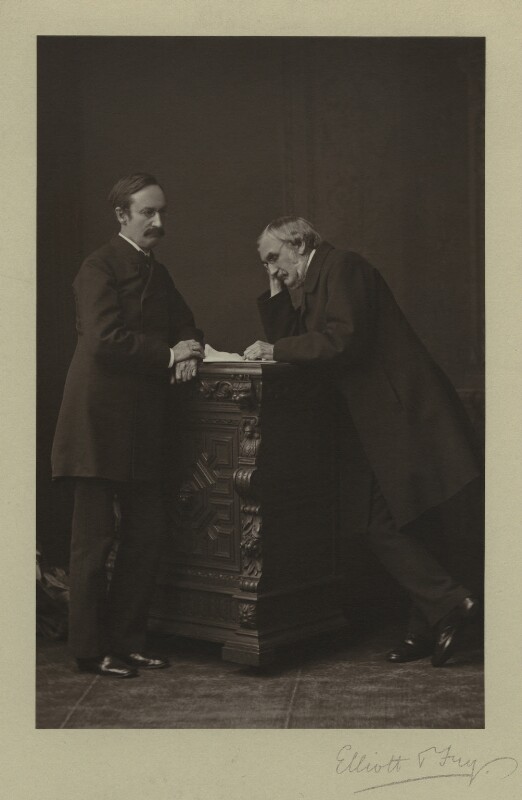
The Stracheys were a family with a long presence in colonial India. Passing out of the famous Addiscombe Military Seminary, Richard Strachey had joined Bengal Engineers in 1836. That he was also a President, but of the Royal Geographical Society, breaks the monotony. Even though trained and experienced in the military as an engineer, he was briefly a Finance Member of the Viceroy’s Executive Council. During this period, he got interested in monetary issues. He wanted to bring the currencies of India and England in harmony. Though his proposals were not accepted then, they were responsible for making him a member of the Herschell Committee. He had, a year earlier in 1892, represented British India at the International Monetary Conference held in Brussels.
Similarly, Sir Bertram W. Currie, the last member, had represented Great Britain at the same Conference. He was a well-regarded banker who had been a member of the India Council since 1880. His report was the basis on which the Bank of England saved Barings from its first life-threatening crisis of 1890.
Two aspects of the Herschell Committee
There are two unusual aspects of this committee. The first is how such a high profile committee was formed for a one point agenda. This was to reply to the Government of India on stopping free silver coinage. That such a high profile committee was formed for the issue showed the importance the British Government attached to the matter. The second is that the committee had a strong bias towards members with a background in statistics.
Evidence
Many witnesses came forward to give evidence to the Herschell Committee. As Currie recalled in his reminiscences, most of them were managers of Indian banks, and businessmen trading with the East. They represented that “the closing of the mints would injure, if not destroy, the export trade of India, would lower the price of opium, and handicap the tea-planters of Assam and Ceylon in competing with their rivals in China.”
Findings of the Herschell Committee
Barring three members of the committee, the others started with the premise that the proposal of the Indian Government was unsound. Some of them even supported a bimetallic currency. But, as the work of the Committee progressed, they had before them the proceedings of the Brussels Conference of 1892, and the prospect of a repeal of the Sherman Act in the USA. A further fall in the price of silver was imminent. The Committee unanimously endorse the Government of India proposal to close the mints for free coinage of silver.
Implementation
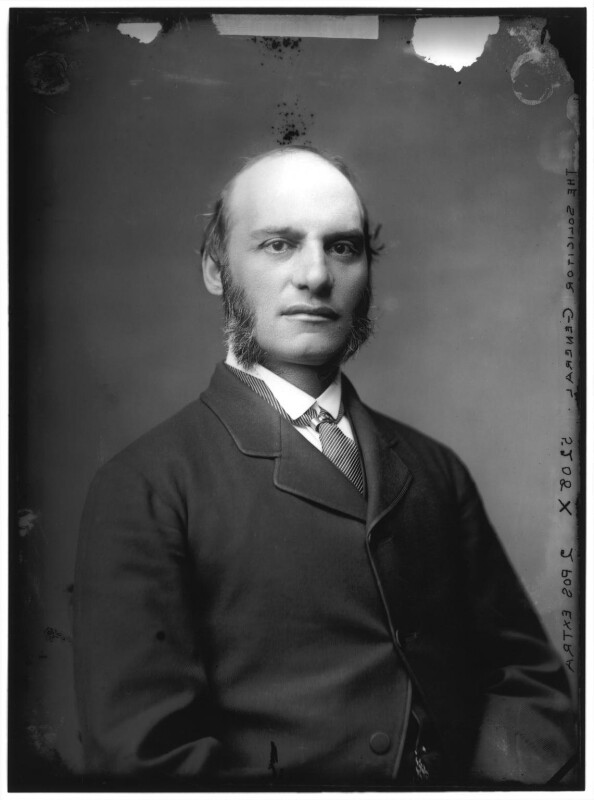
The British Government accepted the recommendations, and made necessary changes. It, however, suggested announcing that the Government might coin rupees, if required by the public. This would be in exchange for gold at a fixed ratio. In the first instance, this was not much above the then prevailing rate, say, at 1s. 4d. per rupee, against government recommendation of 1s. 6d. Government treasuries were also to receive gold at the same rate in satisfaction of public dues. The exchange rate was 1s. 2 5/8 d. on 31 May 1893, the date of the Committee’s Report.
Action on the report was fast. The Government accepted the recommendations. It effected legislation on June 26, 1893, less than a month after the Committee submitted its report. The Government amended the Indian Coinage Act, 1870 and the Indian Paper Currency Act, 1882. It also provided for the closure of the mints to free coinage of both gold and silver. At the same time, the government retained the power to coin silver rupees on its own account.
The government issued notifications on the same day. Accordingly, the mints would accept gold in exchange for rupees at the rate of 7.53344 grains of fine gold. This reflected an exchange rate of 1s. 4d. per rupee. Secondly, it provided for accepting sovereigns and half sovereigns, in settlement of dues to the government, at Rs. 15 per sovereign. Thirdly, the government provided for issue of currency notes to the Comptroller-General in exchange for gold.
Currie on the developments
In 1896, three years before his death, Bertram Currie summed up his views of the decision as follows:
“Now that three years have passed since the closing of the mints, and considering, firstly, that Indian exchange has not rapidly risen, as some of my colleagues on the committee expected, and secondly, that the decline of the export trade and the other misfortunes foretold by expert witnesses have not come to pass, it may be well to record my own view of the question, bearing in mind how fallible is human judgment, and how seldom events shape themselves in accordance with our anticipations.”
“As far as I am able to judge, the policy of the Government of India has succeeded in its object, which was to arrest the further and incalculable fall, which might have occurred so long as exchange was indissolubly linked with silver ; and, in spite of the imprudent utterances of Mr. Balfour and others in the House of Commons, I cannot believe that the Government of India will willingly reverse their policy, or be led away by the phantom of International bimetallism. With the present rate of exchange, the Government of India can meet their foreign, as well as their home engagements without further taxation, and if, as I anticipate, that rate should slowly but steadily rise, they will be able to reduce taxation, and so to strengthen their hold upon the races subject to their rule.”
Currie’s dissent to the Herschell Committee
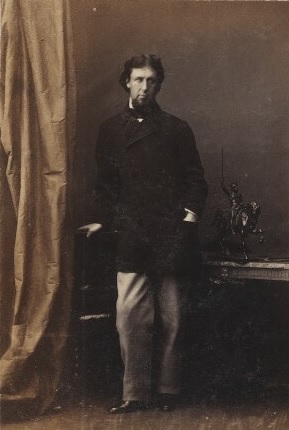
Anticipating future developments and controversies, especially the recommendations of the Hilton Young Commission in 1926, and the dissent note of Sir Purshotamdas Thakurdas, Currie elaborated on his own dissent to the main recommendations of the Herschell Committee:
“The only recommendation made by the Herschell Committee from which I dissented, was that which fixed 1s. 4d. as the point at which gold should be accepted by Government in exchange for rupees. My belief is that India as a great exporting country can get as much gold as she requires in the natural course of trade, and that the more nearly exchange reverts to the rates which obtained before 1872, the easier will be the task of Government. It is impossible to foretell the time when, or the ratio at which gold will be coined at the mints of Calcutta and Bombay, and were I responsible for the finances of India, I should not trouble myself much about these questions, convinced as I am that the advantages of a gold standard are attainable without a gold coinage.
On a related point, Currie wrote: “My ambition would be to reduce expenditure by lowering the salaries of the European officials, which are calculated on a much higher scale than can be found in any other colony or country, and the nearer the rate of exchange approximated to the old level, the easier would be the task of reduction.”
Summing up
As the Reserve Bank’s official history summed up, “the Herschell Committee recommended neither the demonetisation of silver nor the introduction of a full-fledged gold currency. The rupee was to continue to be unlimited legal tender. The Committee’s proposals were intended for a period of transition and were to be regarded as providing the first step towards the eventual introduction of the gold standard.”
The changes went a short way towards a gold standard. Thus, it bound the government to accept gold in exchange for rupees. There was no provision for the reverse. Thus, as the RBI History summed up, “the rupee became a token coin, its intrinsic value, of course, varying with the international price of silver.”
The closing of the mints for silver coinage was a step towards introducing a gold standard. The Government appointed the Fowler Committee in 1898 to consider means for achieving this. By then, the rupee had appreciated to 1s. 4d. by 1898.
An Aside
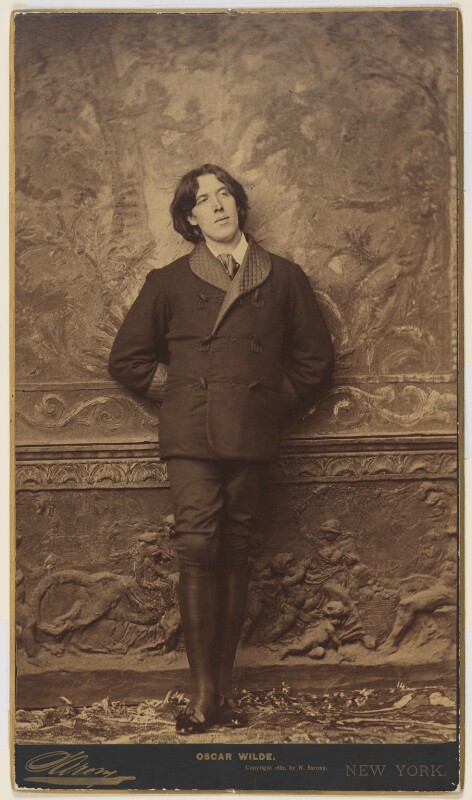
The period of uncertainty in the finances of the Government of India, due to falling price of silver, was a matter of widespread concern. That was also when Oscar Wilde wrote his famous play, Importance of Being Earnest. He started writing it in the summer of 1894. It was first produced on Valentine’s Day of 1895. In the play, Governess Miss Prism tells her ward,
“…Cecily, you will read your Political Economy in my absence. The chapter on the Fall of the Rupee you may omit. It is somewhat too sensational. Even these metallic problems have their melodramatic side.”
We move to the more melodramatic sides to the history of the Indian Currency while discussing the other four Committees. We start with the Fowler Committee, in the next part.
© G. Sreekumar 2021.
For periodical updates on all my blog posts, subscribe for free at the link below:
https://gsreekumar.substack.com/
![]()